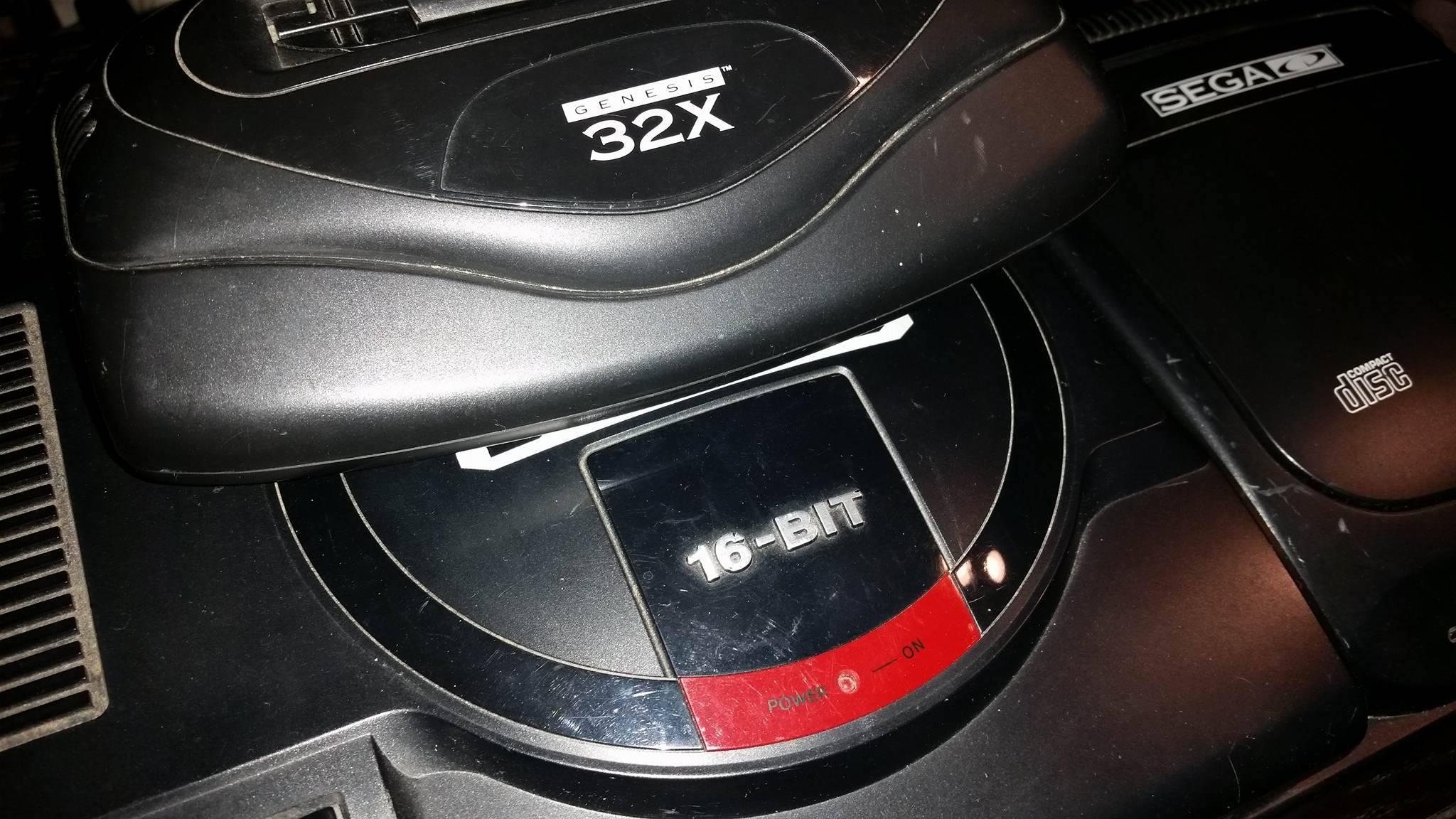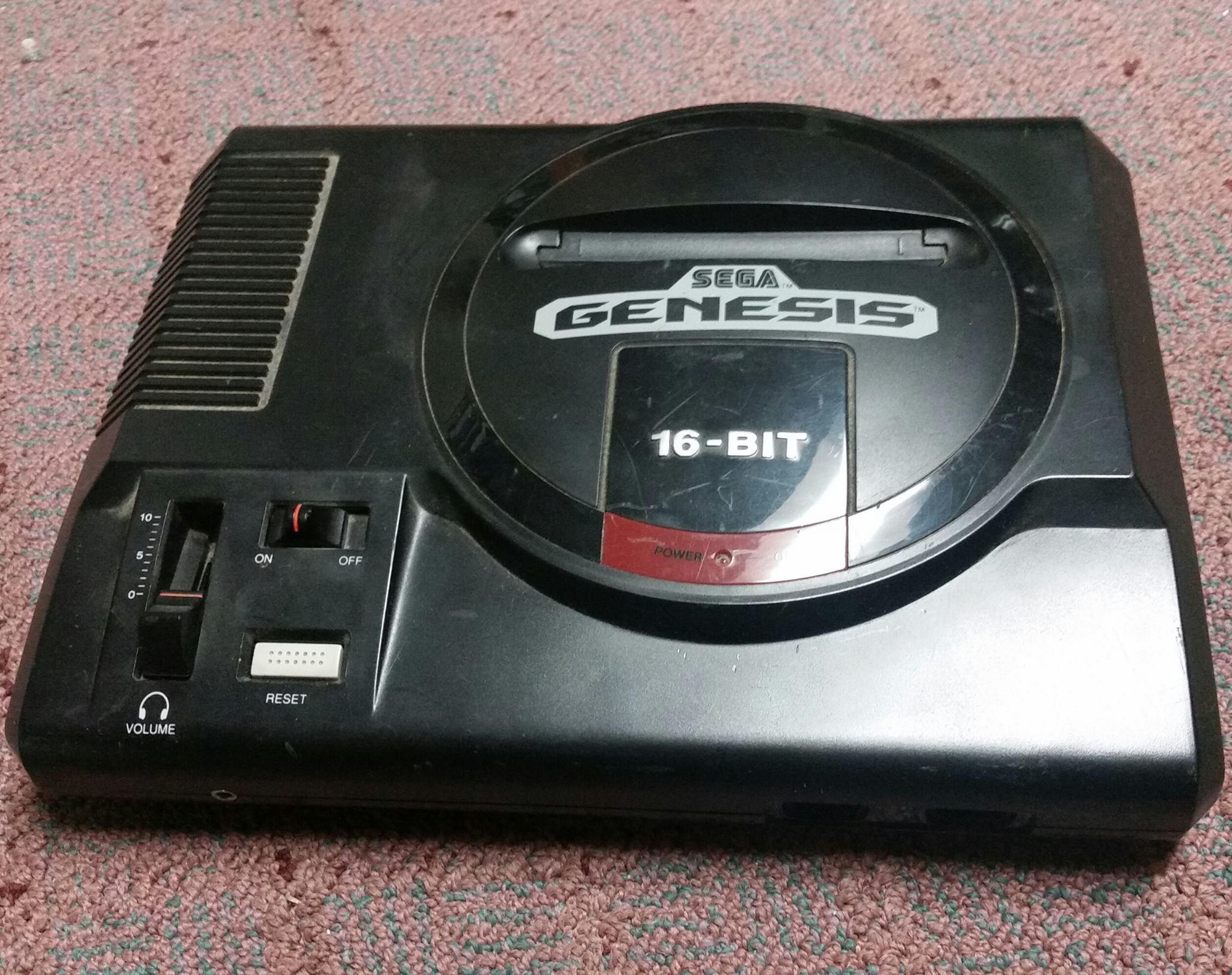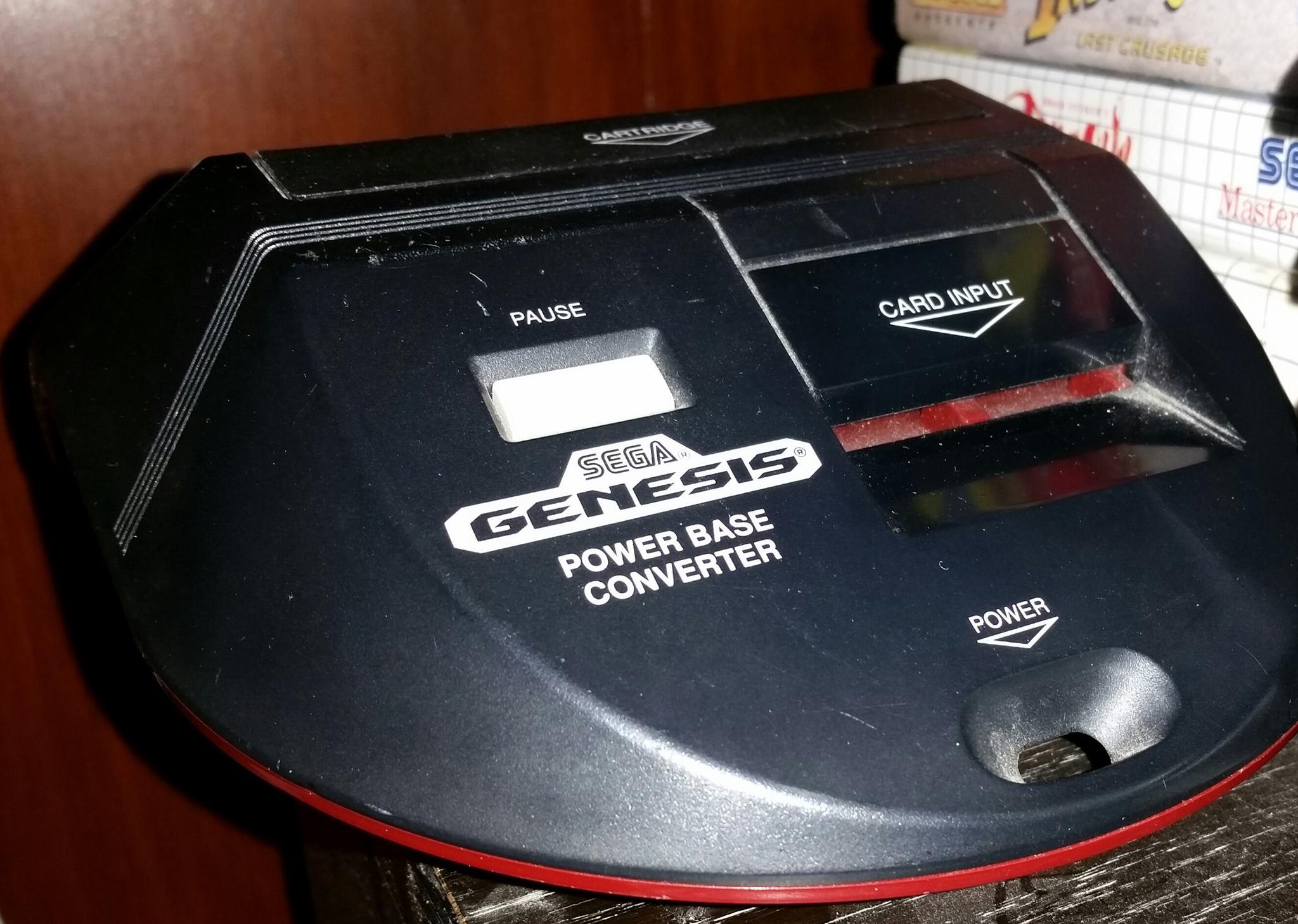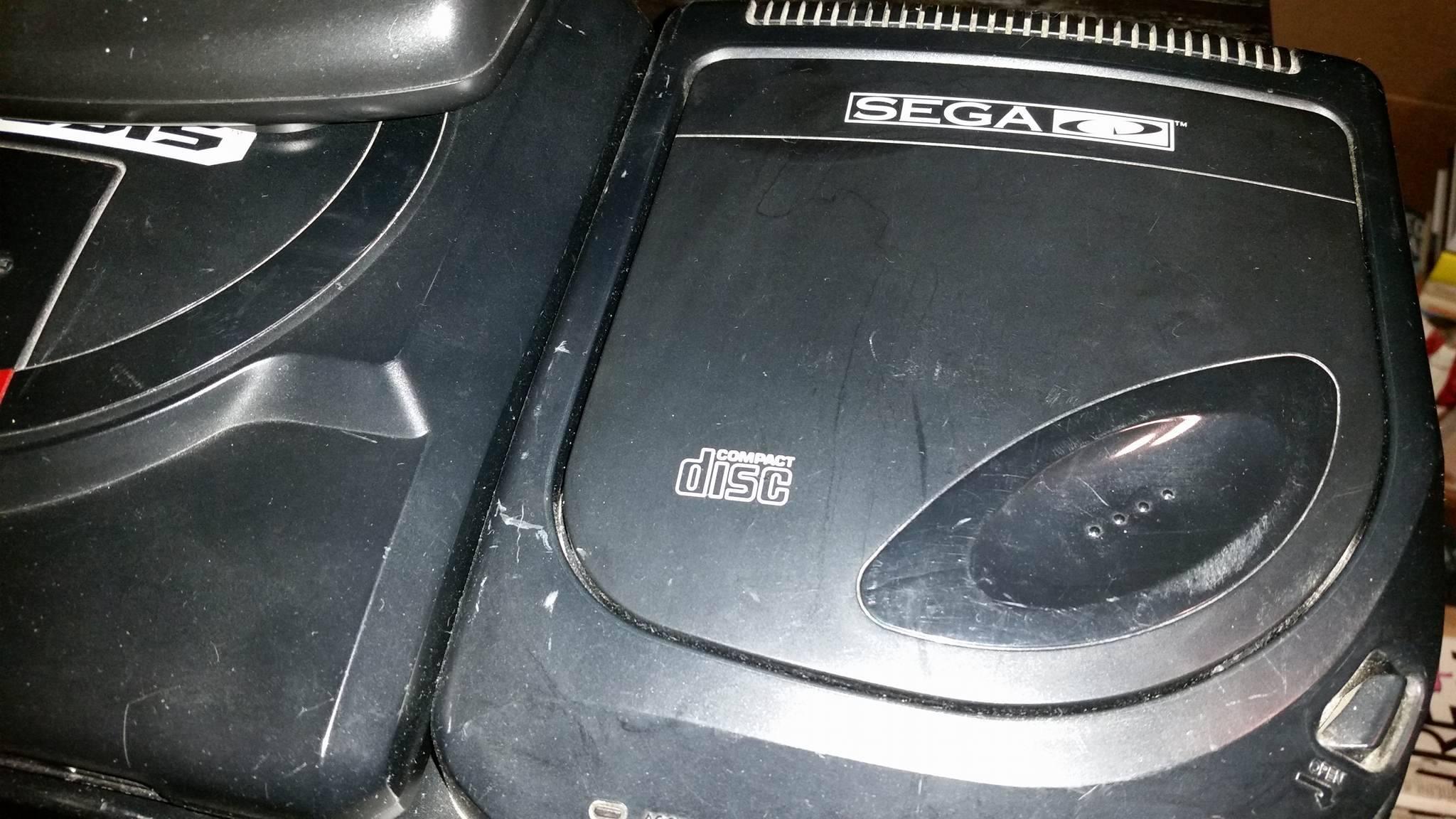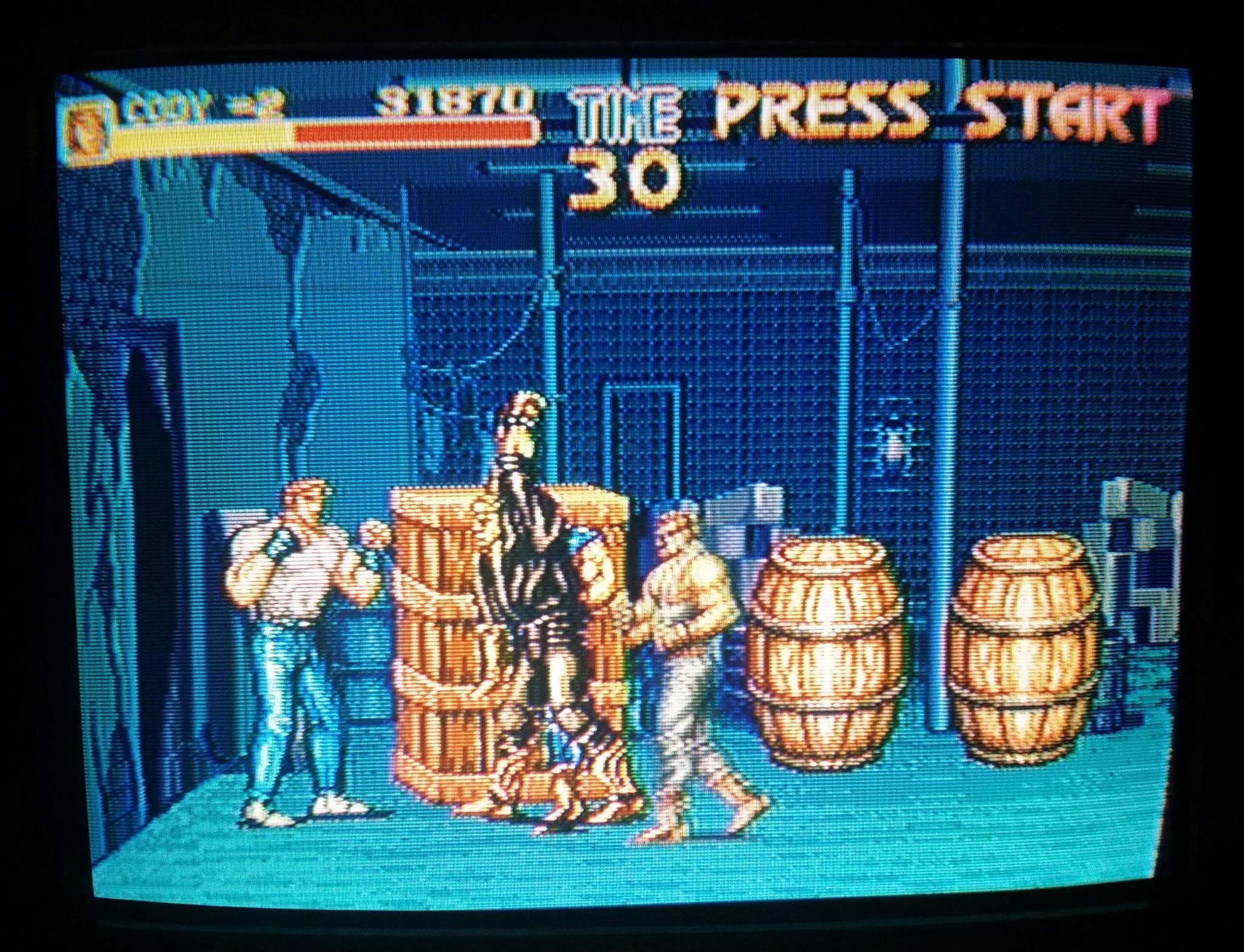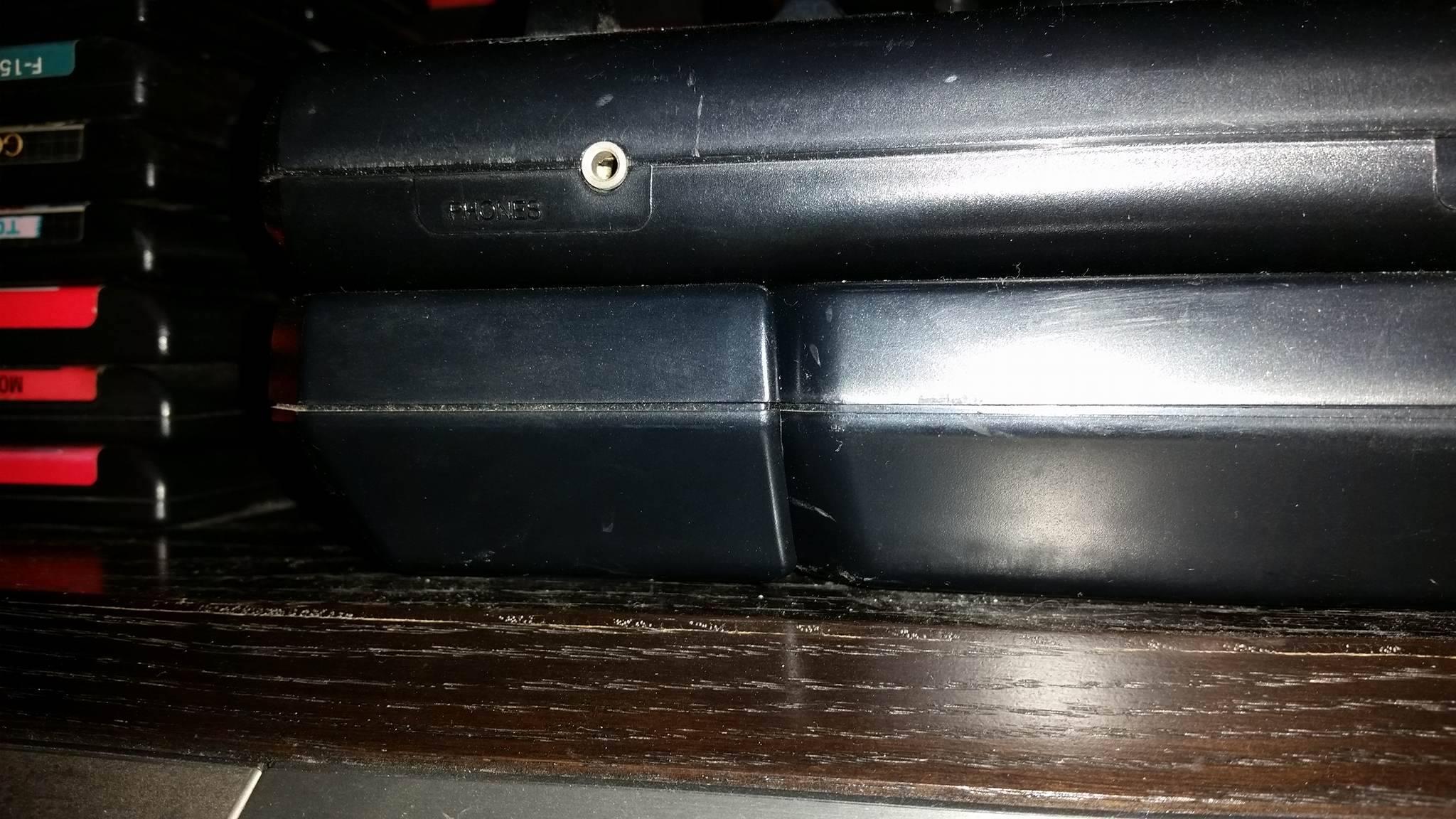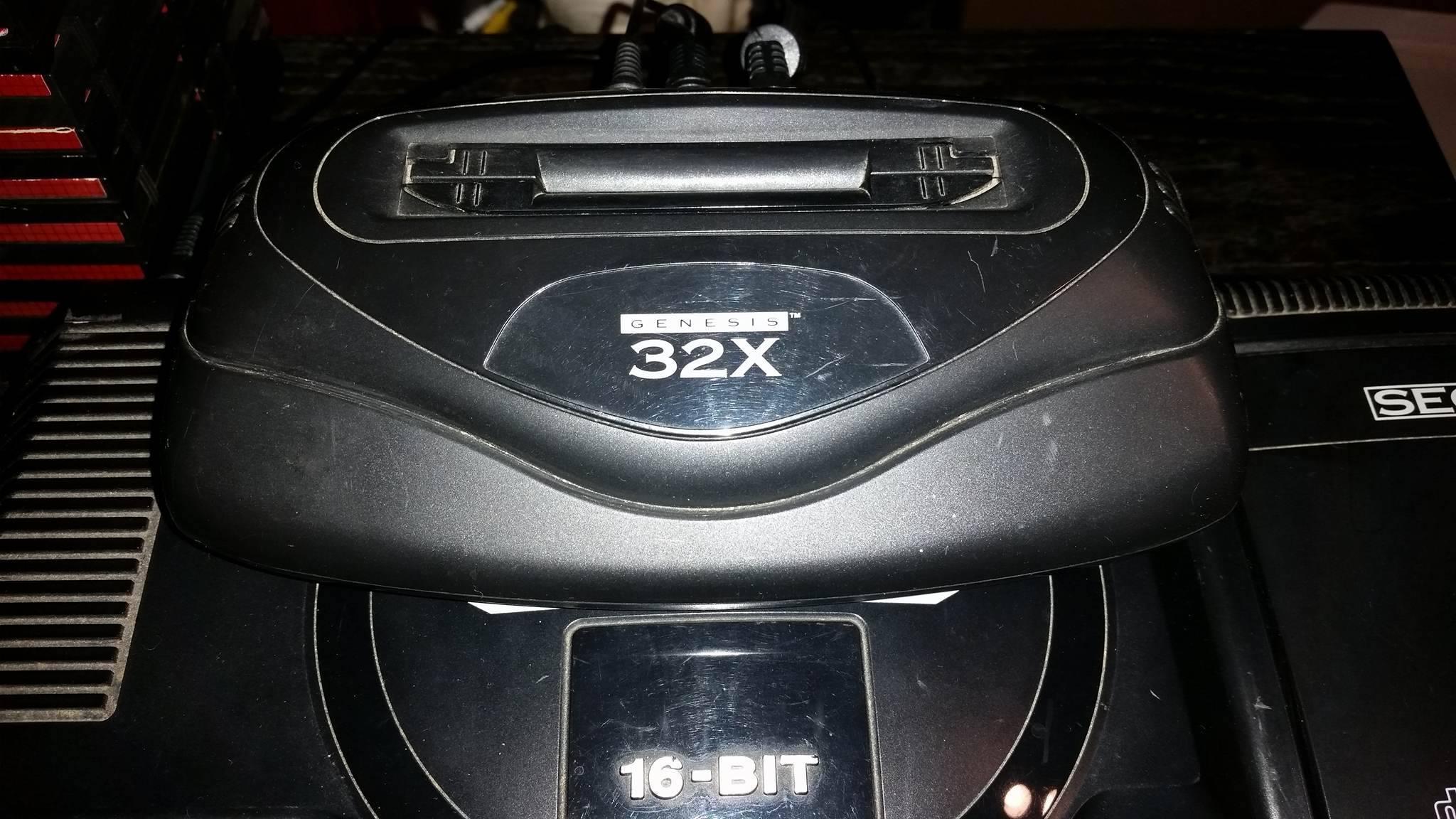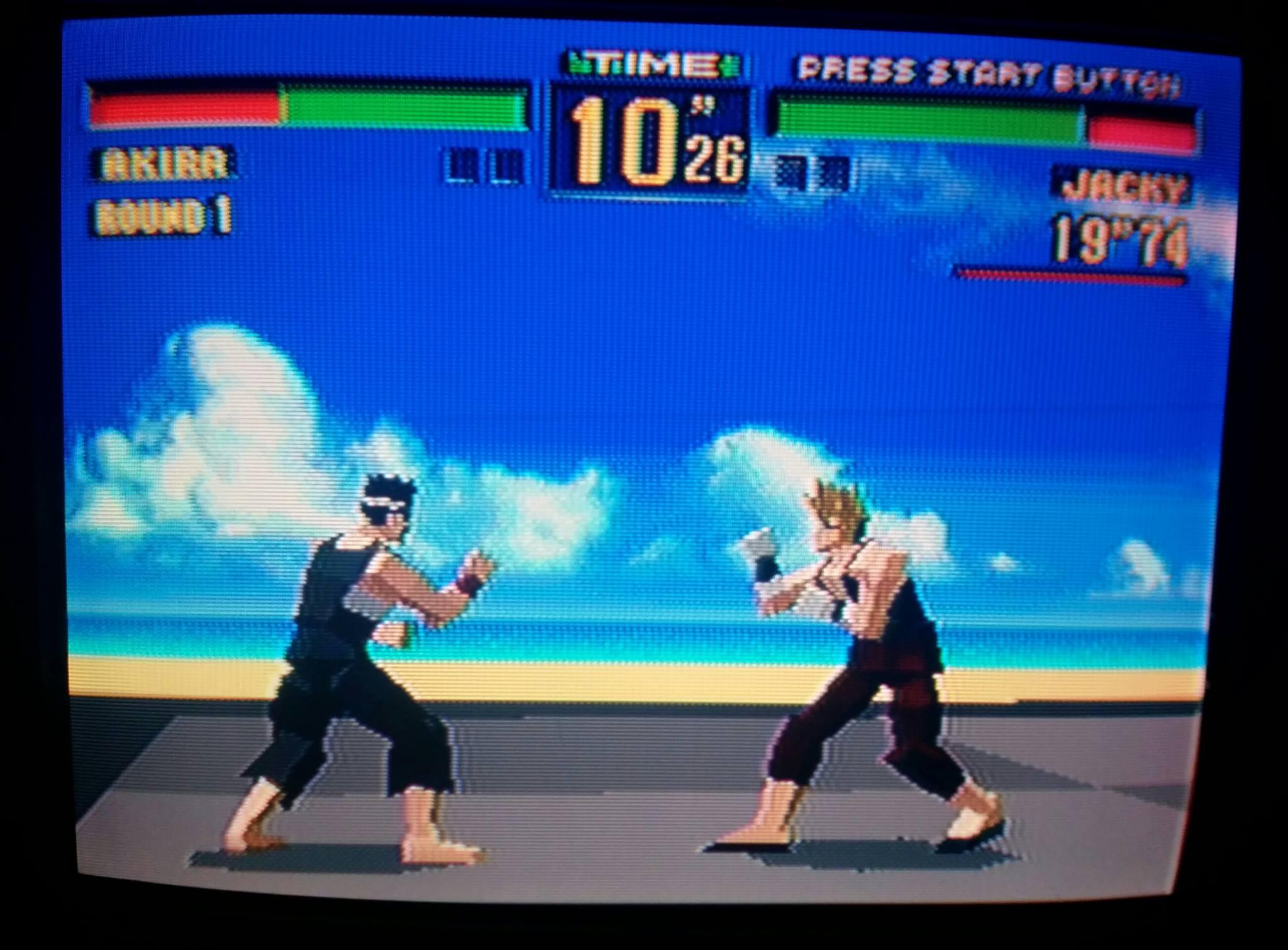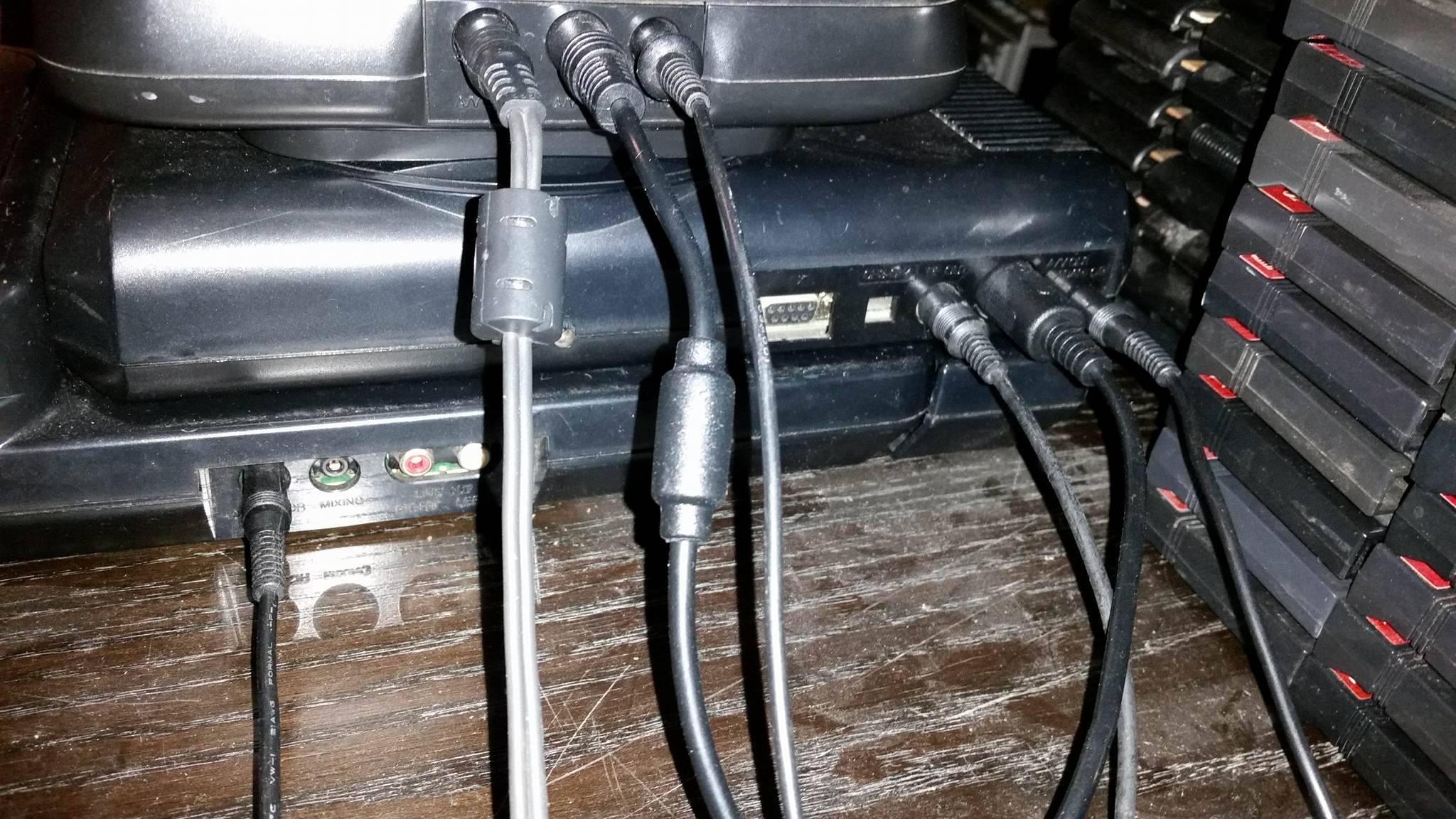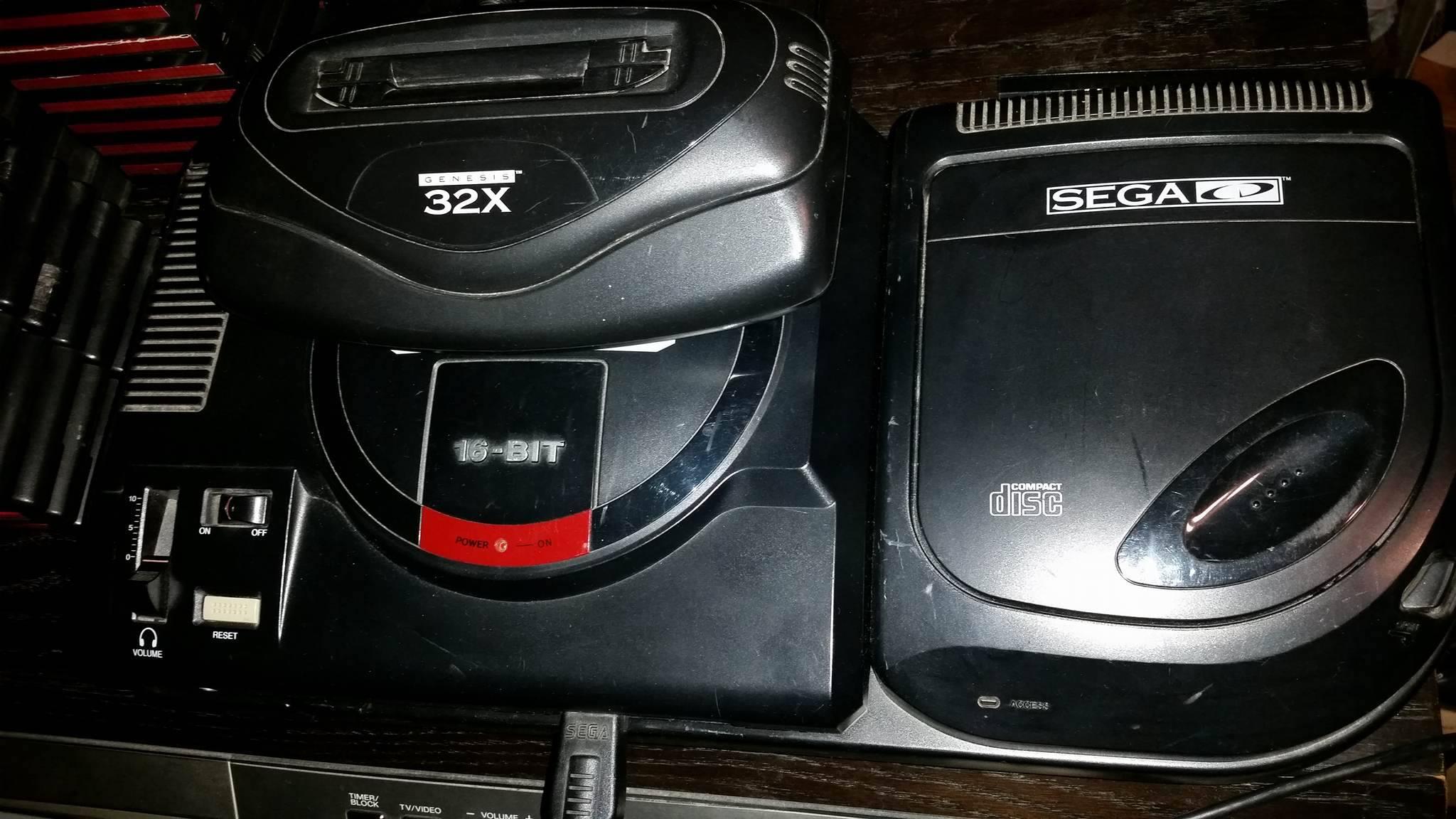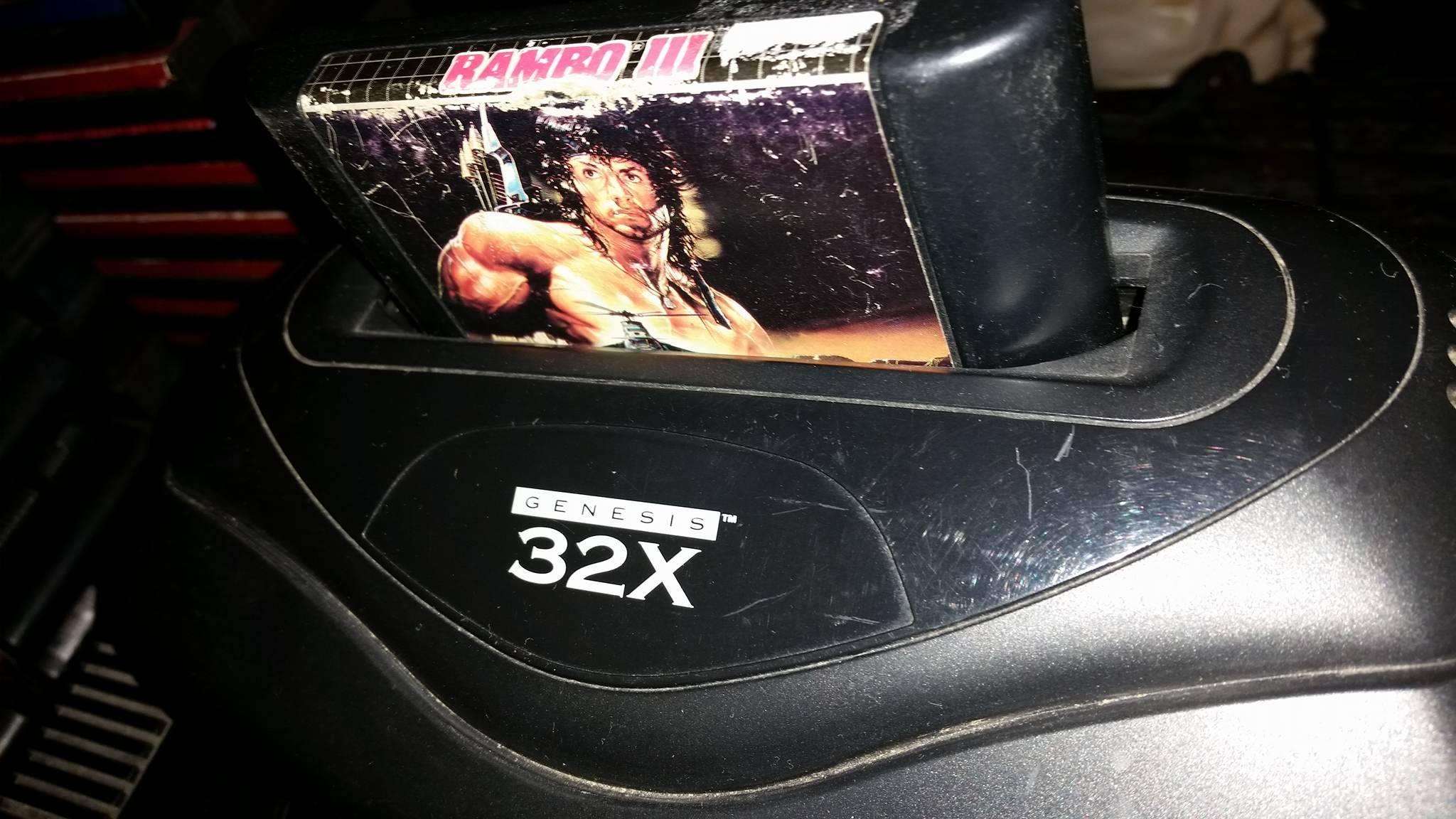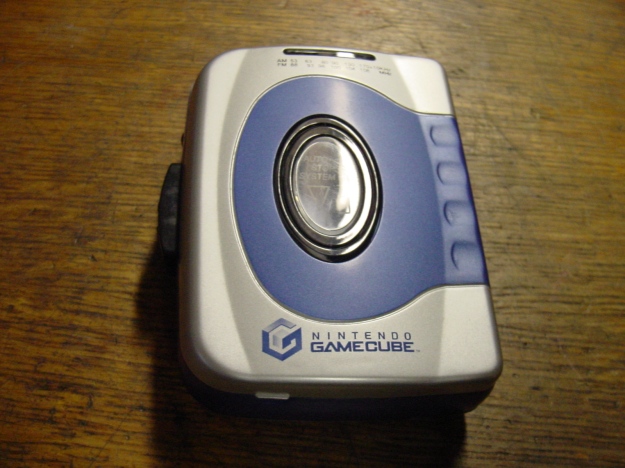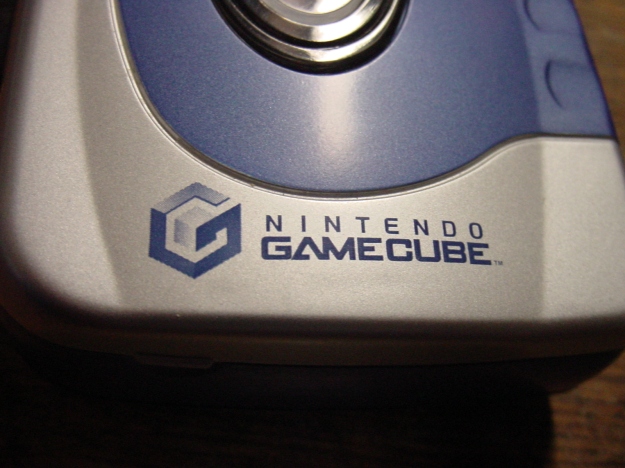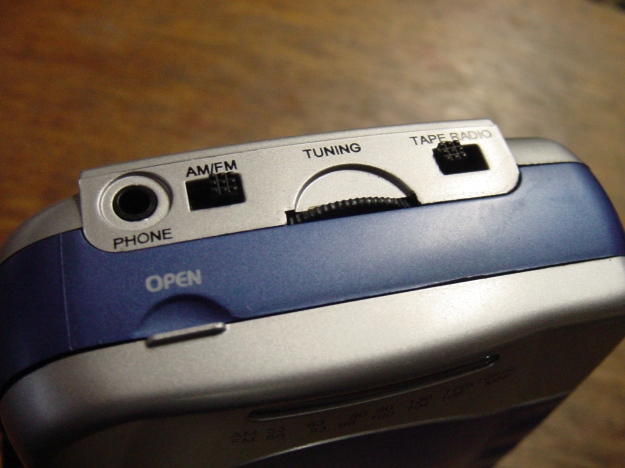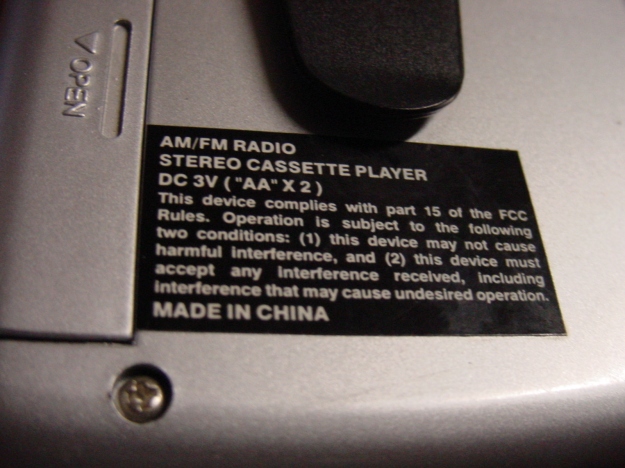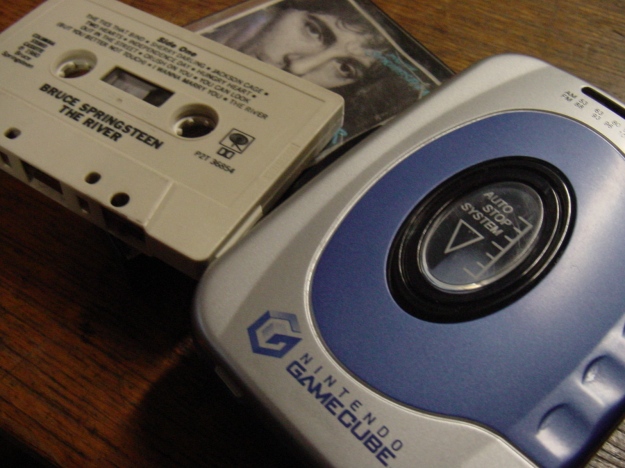
Double Dragon on the Atari 7800? Time to rock!
Look, we need to get one thing straight right up front: I’m a Double Dragon fanatic. If there’s a console with an installment of the series found on it, I want it. I don’t claim to own every release for every system and/or handheld, but Double Dragon and its sequels do take up a relatively significant amount of space in my not-inconsiderable video game collection.
The series should be immediately familiar to anyone that was into video games in the late-1980s and early-1990s; the original 1987 arcade game basically launched the beat-’em-up genre. You know, side-scrolling fighting games in which you fought numerous enemies, typically but not always on a 3-D plane (that is, a foreground and background you can walk between). It was a smash, and naturally sequels followed. The original entries were eventually ported to the Nintendo Entertainment System, though they were only ports in a technical sense; they used the same street fighting motif and general plotlines, but basically did their own thing. Nevertheless, Double Dragon and its sequels, particularly those NES conversions, were seemingly ever-present on the video game scene of the early-1990s, which was when *I* was coming into my own as a young gamer.
Despite popularizing the beat-’em-up genre (though it wasn’t the first such game), looking back, it’s a little surprising how quickly Double Dragon‘s style of walking around and beating up bad guys was superseded by following games in the genre, and not just graphically, either. Only four levels (called “Missions”) and a relatively low number of enemies quickly appeared quaint when compared to longer, all-out fighting extravaganzas like Capcom’s Final Fight some two years later – a template beat-’em-ups largely followed in the early-1990s before the whole idea of a “fightin’ game” was steadily replaced by Street Fighter II and the like.
Actually, despite being wildly unfaithful to the arcade source material, the NES Double Dragon games probably hold up better than other versions nowadays simply because they lengthened and/or added original elements to the ports – additions that help them stand up against the subsequent, more-advanced games in the same genre.

The original Double Dragon arcade machine from 1987. The face that launched a thousand beat-’em-ups!
Still, taken on its own, the original Double Dragon (and at least the first sequel, Double Dragon II: The Revenge) remains a lot of fun today. Aside from some ugly slowdown when too many sprites are onscreen, it’s a fantastic beat-’em-up, though those accustomed to Streets of Rage and such may have a tough time getting into it. Nevertheless, for its time Double Dragon was quite the trendsetter. I mean, simultaneous two-player street fighting action, all in an effort to rescue a kidnapped girlfriend? A bevy of combat moves you could pull off? Colorful, detailed stages to traverse? A variety of enemies to pummel? Of course people would continuously throw quarters at it!
(Even if the period of revolutionary success was relatively short-lived, Double Dragon continued to be a name draw well into the 1990s, eventually spawning, besides the sequels proper, a Battletoads spin-off, a couple one-on-one fighters, an inexplicable board game, those ever-present Tiger handhelds, an animated TV series, and a terrible live-action movie that I, thankfully, only have limited experience with. The brand’s “oomph” sort of tapered off as the second half of the 1990s dawned, but there’s no denying how recognizable the franchise was in the years immediately preceding. A good deal of this popularity can probably be attributed to the series as it appeared on the NES, such was the visibility of both them and it at the time.)
It was also in this late-1980s setting that the 8-bit console wars came about. Perhaps calling it a “war” is a bit of a misnomer since, in the U.S. anyway, it was all about the NES. Seemingly every kid had Nintendo, and growing up, I initially wasn’t aware there even were other 8-bit consoles beyond it. I mean, sure, there were the home computers, but to me, it was basically those and the NES. In actuality, there were three viable 8-bit consoles at the time: besides the NES, there was the Sega Master System, and then there was the Atari 7800. Neither did much comparatively in the States, though the SMS was a force to be reckoned with in much of the rest of the world. (No kidding, the European and Brazilian SMS scene was, and is, fascinating!)
The 7800 was an interesting case; initially intended to right the wrongs that the Atari 5200 had ostensibly committed, the 7800 was meant to come out in 1984, restore Atari’s good name and blow the competition (namely the ColecoVision) out of the water. It was a pretty powerful system for the time, with terrific graphics, a sleek design, and the ability to play Atari 2600 games without an adapter right out of the box.
It didn’t quite work out as planned though. There was a brief test market in ’84, but the combined effects of the infamous early-1980s video game crash and the sale of Atari Inc. from Time Warner to Jack Tramiel put a halt on an immediate wide release. In the aftermath, Atari Inc. became Atari Corp., and the 7800 was placed on the back burner until 1986. The 7800 was still a capable console with an enormous amount of potential, but with a library of older titles and a somewhat-damaged reputation to the name “Atari,” not to mention constant cost-cutting measures regarding new titles and peripherals, well, it was an uphill battle against the Super Mario juggernaut that the NES became as the 1980s wore on. The added competition of the Sega Master System didn’t help matters, either.
Even though the NES, SMS and 7800 were all originally developed around the same 1983/1984 time frame, and all eventually wide released in the U.S. in 1986, due to the specific circumstances surrounding the 7800’s debut and subsequent library, it feels like a console caught between two eras of gaming. To me, it’s like a system from both the early/mid-80s and the late-80s, if that makes any sense. ‘Course, that’s one of the reasons I love it so much; no joke, the Atari 7800 is absolutely in my personal top five favorite consoles.
Anyway, fast forward to 1989. Gaming consoles are again big business, revolutionary titles are coming out left and right, and Double Dragon has already swept not only the arcades but also the NES and SMS. It was in this climate that the Atari 7800 port of Double Dragon, released by Activision, arrived.

The fantastic but ill-fated Atari 7800, complete with Double Dragon loaded!
This was amazing for a few reasons. 1) Nintendo’s licensing agreements with software developers meant that it was hard, often impossible, for the same games to come out on more than just the NES. Thanks to legal loopholes however, there were exceptions, and several titles well-known as members of the NES stable also appeared on competing consoles. 2) The 7800 was great at playing classic arcade ports such Asteroids, Centipede, Joust and Ms. Pac-Man, and had it been released in 1984 as intended, the matter would have been less egregious. But by the late-1980s, new names were needed, and the 7800 was woefully lacking in that area. Rampage, Ikari Warriors, Commando and Xenophobe were welcome exceptions, but that’s just what they were, exceptions.
(The issue of original games was another sticking point with the 7800, something Atari only seemed to truly realize within the last few years of the console’s life. By then it was far too late to save it, but we did get the Super Mario Bros.-ish platformer Scrapyard Dog, the intensely-quirky Ninja Golf, and what just may be the best game on the entire system, The Legend of Zelda-esque Midnight Mutants, starring Al “Grampa Munster” Lewis himself!)
The current homebrew scene has expanded the 7800’s library considerably, but where the original run is concerned, there were less than 60 titles released, and while many of them were/are pretty good, there were few that would have truly raised eyebrows in that late-80s/early-90s video gaming climate.
Enter 1989’s Double Dragon. Simply put, this was the exact type of game the 7800 needed. A modern arcade port, and a hot one at that. The 1988 home version on the NES was a massive hit, and 1989 was also the year a (very loose) port of the sequel arrived for the ol’ toaster. Furthermore, the SMS version of Double Dragon was also an extremely popular title, one which some would say was even better than the NES’.
So yes, in a library that initially only consisted of 59 games (two of which weren’t even released in the United States), Double Dragon stood, and stands, out big time. They came close, but Commando, Rampage, Ikari Warriors and Xenophobe, while more current than most of the 7800’s offerings, and with some late-80s coin-op clout to boot, just didn’t share quite the same name recognition that Double Dragon had. Could any of them touch Double Dragon as far as popularity went? Thanks mainly to the wildly successful NES port, I’d say “no.” Indeed, this release marked the only time that 7800 owners could truly partake in the same then-modern gaming experience as NES owners could. Some of the same games showed up on both systems, but Double Dragon was one of the gaming properties of the late-1980s, in both the arcades and at home. For once, 7800 owners could bask in the same glow as NES (and SMS) owners!
(A cool example of this “phenomenon”: I have a comic book buried in my collection from either 1989 or 1990 – I can’t remember which year for sure – and when it comes to the advertisements found throughout the issue, not only is this 7800 game pitched, but so is the NES original and sequel! I’m going to guess that sort of thing didn’t happen very often!)

A cart with perhaps more fisticuffs than any other 7800 game!
Double Dragon was a Technos Japan innovation, with the NES port released by Tradewest (in the U.S.) and the SMS’ by Sega themselves. Activision, they of River Raid and Pitfall! fame, were still riding the Atari bandwagon in the late-1980s, one of the few third parties to continue do so, and it was they that put out our game on both the Atari 7800 and still-breathing 2600. That’s right, there’s an Atari 2600 port of Double Dragon, too! Given the mega-primitive hardware and one-button limitation of the joystick, it’s actually a pretty impressive piece of programming, featuring some terrific graphics and sound given the console it’s on. It’s not the most playable version of Double Dragon ever released, the difficulty is too high and there are too many moves mapped to the single fire button, but it is recognizable as Double Dragon, and that in and of itself is amazing.
The cart you’re seeing here is, obviously, the 7800 version. The 2600 version looks very similar, with the same plain layout except the colors are reversed (white-on-black instead of black-on-white), and naturally with “for the…” altered accordingly. Considering the 7800 library is littered with dull, black & white cartridge artwork, it’s too bad a more-striking label didn’t show up, but beggars can’t be choosers – I mean, at least the 7800 got Double Dragon!
(Remember, this is an article from a North American perspective; label art and the like varied in other countries.)

The iconic Double Dragon title screen, reproduced on the 7800!
Upon powering up the cartridge, you’re presented with the pleasant surprise that the 7800 received the most arcade-faithful port of all three 8-bit consoles. Indeed, at points it almost looks like someone took the arcade game and “7800-ized” it.
Something is evident on the title screen that’s very, very important. Look down at the bottom of the screen and see what it says: 1 or 2 players.
“Yeah, okay, so what North Video guy? Everyone knows Double Dragon is a two-player game!”
Well sure it is…in the arcade and on most of the home editions. There was one home edition, however, that inexplicably made it two-players alternating: the NES port. Yes, in what was perhaps the most visible version of the game out there, the biggest feature of the original coin-op, the meaning of the very title itself, was stripped out! The NES port, for all the tampering with the levels and moves it featured (more on both of those in a bit), was magnificently playable. But, there’s no doubt that removing the ability to simultaneously beat down thugs with a buddy absolutely destroyed some of the magic that made the game so popular in the first place.
Well, that simultaneous two-player action is indeed present here on the Atari 7800!

Mission One’s “city slum.” That’s a whip in Billy’s hand, and a bat on the ground. Dig the “Scoop Moto” billboard – just like the arcade!
The arcade-accuracy continues into the game proper. Even the (in)famous intro, in which your girlfriend is slugged in the stomach and carried away is here – a shocking and wildly uncomfortable bit of violence that I can’t believe flew even back then.
That short sequence upon the start of a new game is about all the exposition you’re going to get, because there’s really no in-game plot to speak of. Not that you necessarily need one; saving a damsel-in-distress wasn’t exactly a new innovation in video game plots by the late-1980s, but it provides sufficient motivation for fisticuffs, methinks.
The plot was expanded upon in supplementary materials, sometimes exponentially so; Japanese releases place the setting at some point in the then-near future, after a nuclear war has devastated the population and caused gang warfare to rise. I don’t like this explanation at all; it adds an added layer of science fiction to the proceedings that, in my opinion, the game just doesn’t need. U.S. story lines were more straightforward in their telling, with a much simpler tale of a rampant street gang, the two brothers that oppose them, and the kidnapping of a girlfriend by said street gang. That’s all you need; background is nice, but it’s not something generally required in a game of this nature.
The gist of the plot, in both Japan and the U.S., is this: The Black Warriors (the bad guys) have taken over the city, and are opposed by relatively few, save for the twin brothers of Billy Lee and Jimmy Lee (the good guys), who are quite proficient in the martial arts. In order to lure them on to their turf and take them out once and for all, The Black Warriors kidnap Billy Lee’s girlfriend Marian. This is unacceptable, and so Billy (and his brother Jimmy as the second-player) set out to beat down some thugs and rescue her.
To get to Marian, the titular characters must traverse four environments: the city slum, the industrial area, the woods, and finally, the enemy base.
These level layouts in 7800 Double Dragon are far closer to the arcade than either the SMS or especially the NES. The SMS mostly followed the stages found in the coin-op (and included simultaneous two-player action as well), though it diverged in a few spots. The NES port was all over the place, with levels that typically started out somewhat faithful to the coin-op and then just went nuts. Platform elements, a trip up a construction site, into some caves, and so on and so forth. It was fun, and it actually did work, but it wasn’t exactly arcade-accurate. Though as I said earlier, the additions served to lengthen the game and make it more suitable for an at-home experience, which means it has held up better in the long run (the same thing applies to the versions of Double Dragon II and Double Dragon III on the console, as well).
In the 7800’s case however, what you saw in the arcade was by and large ported over to the Atari, and there’s something to be said for faithfulness to the source material. Unfortunately, Double Dragon wasn’t an especially long game as a coin-op, and that carried over here, too.

Mission Two’s “industrial area.” You certainly CAN climb up that fence!
By the way, if you’re totally bored, you may be asking yourself “hey, where’d y’all get these swell in-game screenshots, North Video Guy?” The answer to that is: I took them myself, with an actual 7800 console, cart and CRT TV. Y’see, I don’t emulate, so if these screenshots lack somewhat in the sharpness department, and I know that they do, that’s thanks to the good ol’ RF signal; no, the 7800 I used hasn’t been modded for AV output. Honestly, I actually think this gives a more accurate picture of how the game is meant to be displayed, closer to how kids playing it upon release first saw it. The harsh sharpness of emulation actually makes the game look uglier than it needs to.
And while on that subject, let’s talk about the graphics proper. 7800 Double Dragon isn’t a bad looking game as a whole, but it is a mixed bag.
The arcade-faithful backgrounds generally look pretty nice. The first two stages have sort of a drab color-scheme, but the detail is excellent and the layout is just like the coin-op. The third and fourth levels are terrific, with a richly-detailed forest in the third and foreboding enemy fortress (complete with deadly spike pit) in the fourth. Modern day homebrew games aside, the graphical-detail in the latter stages of Double Dragon are some of the best graphics seen on the 7800.
As for the sprites in the game, well, they’re another story. Simply put, for the most part they look like something the Atari 5200, a full console generation before (and with hardware even older than that), could have pulled off. They’re awfully blocky, and with a minimal amount of detail. Except for Abobo (the big, hulking enemy that has become one of the most popular faces of Double Dragon), the characters don’t really look very good. It’s quite a contrast with the backgrounds!
They may not all look great, but did everyone from the arcade original at least make it over to the 7800? Yes and no. Billy and Jimmy are here, using the same, palette-swapped sprite. The same goes for common thugs Williams and Roper, and 2nd level boss Jeff; they all use the same sprite as Billy and Jimmy, just with different colors. Female thug Linda is here too, but shares the same image as the kidnapped Marian. Head bad guy Big Boss Willy obviously gets his own design, as naturally does Abobo. (Technically, there was Abobo and Bolo in the arcade, both nearly identical save for a few differences, but c’mon, it’s always just been Abobo to the layman).
So yeah, everyone’s here technically, but not without some caveats.
As mentioned, the NES version is one-player only, and can display two enemies at a time, albeit with some graphical break-up. The SMS has two-players simultaneously and up to three enemies, but there’s a lot of flicker throughout. With the 7800 however, one of the strengths built into the system from the get-go was the ability to move a lot of sprites at the same time, without flicker or slowdown.

The richly-detailed forest of Mission Three. Note the number of sprites onscreen, without flicker or graphical break-up! Neato!
This ability is readily apparent in Double Dragon. The game can have up to four bad guys onscreen, plus your one or two players. No graphical break-up, no flicker, and no slowdown either, except for some choppy scrolling when moving to a new screen. This version plays a bit more sluggish as a whole, but it’s not a deal breaker, and the relatively slower, more-deliberate pace of the game actually serves it well.
While on the subject of sprites, one thing about the original coin-op that wore real thin, real fast was its tendency to slow down when the screen became crowded. Yep, the more sprites there were at a given moment, the more the action crawled. Honestly, if you’re able to get beyond the relatively-archaic nature of the proceedings (early beat-’em-up and all), that’s really the only downside to what is otherwise still a terrific game.
The slowdown in the original coin-op often made the use of weapons more of a chore than a pleasure, which is a shame, because the ability to grab a new beat-down implement was another one of the revolutionary aspects of the game. You never saw Thomas appropriate one of those knives from a mindless grunt in Kung-Fu Master, after all!
The arcade featured bats, whips, knives, boulders, barrels, boxes and dynamite, all of which your character could pick up and use in his quest for kidnapped-girlfriend-vengeance. (And of course, they could always be taken from you, as well.) Only the bats, whips and knives made it to the 7800 port. In contrast to the later Streets of Rage, in which a knife could be used repeatedly or thrown at once, in Double Dragon it was always a one-throw deal. The bat and whips can be used repeatedly, though unlike the arcade, they eventually disappear when moving from one section of a level to another (common for home console conversions of the period).
Ah, but it was the attacks, the various combos you could pull off, that really sets Double Dragon apart from other side-scrolling fighters. Not set, sets. Later beat-’em-ups simplified the amount of attacks, sometimes with only a jump and punch button, maybe a special move. Double Dragon was considerably more involved, with a style of game play that more-closely resembled actual martial arts street fighting (I assume; so rarely do I get out to street fight). From the three buttons and joystick, you could pull off punches, kicks, jump kicks, reverse jump kicks, headbutts, elbow smashes, over-the-shoulder throws, the ability to repeatedly knee an enemy in the face, and with a buddy, one player could even grapple a baddie while the other slugged him (which worked the other way around, too). Amazingly, with all of these options at your disposal and relatively few buttons, it worked really, really well.
With only two attack buttons generally available, obviously all these moves didn’t always make it to the home versions intact. The NES port fared better than most; even though you had to continuously “level-up” to earn more of them, in some odd form of RPG-ness, you could amass an impressive range of attacks, including the ability to sit on an enemy and punch them relentlessly in the face. This wasn’t found in the coin-op, but rather in Technos’ prior beat-’em-up Renegade, which was Double Dragon‘s spiritual predecessor in more ways than one.
The SMS version retained a good number of the attacks, though for me, only the punches, kicks, jump kicks and headbutts were consistently easy to pull off. (You can elbow smash and knee-in-the-face, but I could only ever trigger those attacks by mistake!)

Mission Three is lengthy and culminates in a mountainside fight at the entrance of the enemy base…against not one but TWO green Abobos!
The 7800 actually fared pretty well in the translation. The knee-in-the-face and over-the-shoulder-throw options were, disappointingly, excised. (So is the grapple technique, though no home version got that, as far as I know.) But, along with the obvious abilities to punch, kick and jump kick, the reverse jump kick, headbutt, and elbow smash all made it in. Some of the button combos to make these moves happen are a little strange (down + punch to headbutt? What was wrong with double-tapping left or right like the arcade, NES and SMS?), but mostly this all works okay.
However, we now come to the biggest problem with the Atari 7800 version of Double Dragon, and it’s something that’s not even the game’s fault: the painful stock U.S. 7800 controller. Here in the States, we got the “ProLine Joystick,” and from start to finish, it was pretty much a holdover from the early-1980s era of controller-design. Basically an elongated grip with a joystick at the top and a fire button on each side (think ColecoVision or Atari 5200), it was a controller not suited to long sessions of any game, never mind one that requires constant movement and button-pressing like Double Dragon.
Overseas, Europeans got the “ProLine Joypad,” and it’s a far, far superior controller. Basically Atari’s answer to the NES control pad, it’s a continual mystery why it never replaced the joystick here in the U.S. It’s not perfect, but considering the alternative, it’s definitely preferable, and it makes all the difference in the world when it comes to Double Dragon.
Y’see, this game has gotten a reputation for being overly difficult, and in many eyes, not very good. Hey, I’ve been on that side of the fence a time or two in the past, too. When I first got the 7800 port many years ago, I was by no means a novice at Double Dragon. And yet, I could barely make any headway before exhausting all my lives (you get three to start, an extra at 50,000 points, and no continues). I was probably convinced it was either the hardest or most poorly-programmed port 8-bit console port there was.
Fast forward several years, when I decided to get myself some of the European Joypads. After all, I loved the 7800, so why not, you know, fully enjoy it? 2600, or even Sega Genesis, controllers were fine for single-button games, but some of the best 7800 titles, like Commando or our subject today, require two. And what a revelation! A whole new appreciation for the 7800 port of Double Dragon was gained, all because I could finally properly play it! Go figure!
I think 7800 Double Dragon gets a bad rap as far as difficulty is concerned. Don’t get me wrong, it’s on the challenging side; the enemies can hound you and get some cheap shots in. But, it’s really not any more difficult than any other 8-bit conversion, and in fact is probably easier as a whole than the NES port, where you can save all of your lives only to blaze through them in a hurry on the last level.
The controller, I think, is one of the issues with that difficulty perception. Seriously, get the European Joypads. Do what you gotta do to play Double Dragon comfortably, because it ain’t gonna happen using the regular ProLine Joystick. I can beat the game using it, but it’s not exactly an ergonomic experience.
The controller used isn’t the game’s fault, but another key to enjoying the beat-down frenzy is: the punch. There’s a very simple method to avoiding frustration with this game, and it’s this: just don’t punch. I know that sounds weird, but hear me out. When animating the attacks, the punch is given a “wind up.” It isn’t instant contact. As such, there’s a moment of hesitation, and this leaves you open to hits. In other words, you end up taking taking cheap shots and trading blows back and forth.
Some players like to spam the elbow smash (just like the arcade!) and jump kicks here, but in my experience, you don’t necessarily need to do that. When using a normal, ground-based attack, just stick with regular kicking. There’s no animation between the button press and the result, so it’s ‘instant,’ and as such, you can hammer away at baddies without taking too many unnecessary hits back.

Mission Four, with some of the best graphics in the entire game!
On top of that, the enemy A.I. is painfully stupid. Yes, they can be tough, but once you learn their patterns, you can counter them pretty easily. Same goes for most beat-’em-ups, I know, but especially here. Much like the NES version, if you get in ‘close’ to an enemy, especially when coming in from underneath, you should be able to knock them down and eventually out while saving most of your life bar. As such, even the Abobos and Big Boss Willy, traditionally the toughest enemies, can be defeated without too much trouble.
So no, 7800 Double Dragon isn’t too hard. If anything, it might be a little too easy. You just gotta learn the tricks!
Lastly, we come to the music of 7800 Double Dragon. One of the most celebrated aspects of the game, in both its original incarnation and in most of the ports, was the soundtrack. Double Dragon featured an absolute classic score, one that not only fit the scenes you were traversing but also absolutely got you in the mood to beat down some street punks. On the 7800, we got…some of that.
Y’see, the system was originally intended to include a POKEY sound chip, which would have given it the sound quality of the Atari 8-bit computers and 5200, which was pretty good. When it was eventually released however, the POKEY was omitted as a cost-saving measure. The chip could be added to individual carts, though sadly, this was only utilized twice, for Commando and Ballblazer. Both have terrific music, but aside from those exceptions, the 7800 generally features sound identical to what the 2600 could pull off.
Now, it’s beyond old news to rag on the 7800’s sound quality. Compared to the NES and SMS, it sounds particularly bad, we know. It is what it is. It’s funny, I don’t even mind the sound of the 2600, but when it’s paired with the superior visuals of the 7800, well, it just kinda throws you for a loop.
That said, Double Dragon really should have utilized a POKEY sound chip. The soundtrack was so phenomenal that it absolutely, without a doubt deserved the honor. But, it didn’t. As such, we’re left with an incomplete, slightly-shrill score. Two of the mission tunes were omitted completely, meaning there’s some repetition involved. What is included is the famous title-screen track, Mission One’s theme, Mission Three’s theme (in the arcade, anyway), and the boss encounter music, plus the level-ending jingle. You’ll hear the first and third level themes repeated throughout, and not always where they should be.
Incomplete though it may be, at the very least, the music is recognizably Double Dragon.

Does this image practically scream “late-1980s” to you, or is it just me?
So when it comes right down to it, how does the Atari 7800 port of Double Dragon hold up? Better than it doesn’t. The music is a disappointment, and if you’re in the U.S., odds are you’ll have to contend with finding a better controller. Get over those obstacles however, and you’re treated with what I feel is one of the best games in the Atari 7800 library.
True, it lacks the length and extra features of the famous Nintendo Entertainment Version, but it makes up for that with the arcade-accuracy and simultaneous two-player action. And, while the graphics and sound are markedly inferior, I actually prefer this port over that of the Sega Master System, based solely on the gameplay. The SMS version, don’t get me wrong, I like it, but the control has always seemed too loose for my tastes; you’re basically out there swinging fists wildly – there’s no finesse, in my opinion. The 7800 version runs a bit slower, but you can really get into a groove while playing thanks to that.
Perhaps more importantly than how it stacks up against the rival 8-bit ports is what this Double Dragon represents. Think of it; you’re a kid in the late-1980s, you have an Atari 7800, while most everyone else has an NES. Maybe a few of your friends have an SMS. Now sure, there’s plenty of great classic arcade ports at your disposal, and the 2600 library, but that stuff isn’t what’s burning up the video game world at the moment. Games have evolved, become more complex, bigger worlds, better graphics.
All of sudden, here comes Double Dragon, the arcade smash, the game that’s tearing up both the NES and SMS. And now it’s available for the 7800! The series would continue to expand via sequels, spin-offs, and so on and so forth, but for this one occasion, 7800 owners could boast the same hot game as NES and SMS owners could. Not that Double Dragon was the only shared title across the three; Rampage hit all of them as well. But, Double Dragon was a trendsetting name brand that, as I’ve said, was incredibly recognizable in the late-1980s and early-1990s. It showing up on the 7800 seems special to me in a way that, frankly, Rampage doesn’t. That’s just my perception, though.
Furthermore, the beat-’em-up was a genre sorely lacking on the 7800. Kung-Fu Master was fun, but simplistic and old hat by the time it came out on the system in ’89. Ninja Golf and Basketbrawl were quirky Atari originals that combined sports with fighting. And Karateka? Well, we don’t talk about Karateka. None of them could attain quite the same level that Double Dragon achieved – and achieves.
Double Dragon was something special in the Atari 7800 library, and even if it wasn’t a perfect game, that’s still to be celebrated. Even today!

 Quick background: in the 1970s, General Instruments produced the AY-3-8500 chip. Easily acquired, this chip led to a glut of Pong-based consoles from a variety of manufacturers in the late-70s. Of course, since the chip played the same set of Pong variations across the board, this meant there was little difference between the consoles beyond outside cosmetics. Indeed, we’ve already seen one such example with the Wonder Wizard a few years back.
Quick background: in the 1970s, General Instruments produced the AY-3-8500 chip. Easily acquired, this chip led to a glut of Pong-based consoles from a variety of manufacturers in the late-70s. Of course, since the chip played the same set of Pong variations across the board, this meant there was little difference between the consoles beyond outside cosmetics. Indeed, we’ve already seen one such example with the Wonder Wizard a few years back. had to sit right up on the machine and hunch over it for the duration. But since the Compu-Vision wanted you to think it was more than it really was, the controllers, while ultimately hardwired in (always a danger: remember the Arcadia 2001?), are at least removable from the unit. The cords aren’t super duper long, you still need to sit pretty close to the console, but at least you can lean back on the couch some.
had to sit right up on the machine and hunch over it for the duration. But since the Compu-Vision wanted you to think it was more than it really was, the controllers, while ultimately hardwired in (always a danger: remember the Arcadia 2001?), are at least removable from the unit. The cords aren’t super duper long, you still need to sit pretty close to the console, but at least you can lean back on the couch some.


 You’ll have to contend with some relics of video game past, though. No, I’m not talking about the cartridge format (I consider that a good thing), but rather, the antiquated, uncomfortable controllers. I’m not just talking about them being hard-wired into the console, although that’s annoying too (this is a factor that will come back to haunt me; you’ll see later in the post), but rather, the elongated shape sporting a numeric membrane keypad, a joystick and fire buttons on the sides. It’s not particularly comfortable, and certainly not suited to long play sessions, and it’s a design seen over and over again in early video game consoles. From the Intellivision to ColecoVision to, well, even the APF, manufacturers sure did love to make kids’ hands cramp up! You think you’re such hot biscuits, takin’ on galactic invaders and whatnot? That may be true, but that doesn’t mean there’s not a price to be paid for such a wild, unchecked ego. Playing this for long periods of time could have dire ramifications for yours truly. “Hey man, how’d you get carpal tunnel syndrome? 10 years of blogging?” “Naw bro, it’s from playing my Arcadia 2001 too much!” “Your what?”
You’ll have to contend with some relics of video game past, though. No, I’m not talking about the cartridge format (I consider that a good thing), but rather, the antiquated, uncomfortable controllers. I’m not just talking about them being hard-wired into the console, although that’s annoying too (this is a factor that will come back to haunt me; you’ll see later in the post), but rather, the elongated shape sporting a numeric membrane keypad, a joystick and fire buttons on the sides. It’s not particularly comfortable, and certainly not suited to long play sessions, and it’s a design seen over and over again in early video game consoles. From the Intellivision to ColecoVision to, well, even the APF, manufacturers sure did love to make kids’ hands cramp up! You think you’re such hot biscuits, takin’ on galactic invaders and whatnot? That may be true, but that doesn’t mean there’s not a price to be paid for such a wild, unchecked ego. Playing this for long periods of time could have dire ramifications for yours truly. “Hey man, how’d you get carpal tunnel syndrome? 10 years of blogging?” “Naw bro, it’s from playing my Arcadia 2001 too much!” “Your what?”
 Before we go game-by-game here, I just want to make special mention of the instruction sticker on the back of the cartridges. They’re amazing.
Before we go game-by-game here, I just want to make special mention of the instruction sticker on the back of the cartridges. They’re amazing. respectable early-80s console would be caught dead without at least one of these. As such, the standard rules of Space Invaders apply: there are rows of marching aliens descending, fire at them with your cannon till they is all dead. Not gonna lie: I like Space Invaders, but only selectively. The arcade original was certainly revolutionary, but I’ve always found it a little too slow and clunky for my tastes; I much prefer the faster, smoother Atari 2600 port, and actually, my favorite version is the Atari 8-bit computer conversion. It added some original elements to the gameplay that not everyone may like, but it’s those very elements that make it more appealingly intense for me.
respectable early-80s console would be caught dead without at least one of these. As such, the standard rules of Space Invaders apply: there are rows of marching aliens descending, fire at them with your cannon till they is all dead. Not gonna lie: I like Space Invaders, but only selectively. The arcade original was certainly revolutionary, but I’ve always found it a little too slow and clunky for my tastes; I much prefer the faster, smoother Atari 2600 port, and actually, my favorite version is the Atari 8-bit computer conversion. It added some original elements to the gameplay that not everyone may like, but it’s those very elements that make it more appealingly intense for me. saying Cat Trax is an Arcadia dot chompin’ maze game. Was that your guess??? Maybe it’s not fair to call it a rip-off; Crazy Gobbler more fit that particular bill. But like so many other games from that time, it was clearly inspired by the Pac-Guy.
saying Cat Trax is an Arcadia dot chompin’ maze game. Was that your guess??? Maybe it’s not fair to call it a rip-off; Crazy Gobbler more fit that particular bill. But like so many other games from that time, it was clearly inspired by the Pac-Guy. like a poor man’s Pacs, and the monsters and maze-like images in the background do little to dissuade you from that thinking. As such, you’d be forgiven for not guessing this was actually Arcadia’s take on
like a poor man’s Pacs, and the monsters and maze-like images in the background do little to dissuade you from that thinking. As such, you’d be forgiven for not guessing this was actually Arcadia’s take on  for the Arcadia since it took me forever to get a copy (and 3D Bowling was also a big selling point, even though I still haven’t picked that one up), I will say this was my #1 most wanted title for the console for quite awhile. I just had to wait for the right deal to appear! It did, and so here we are.
for the Arcadia since it took me forever to get a copy (and 3D Bowling was also a big selling point, even though I still haven’t picked that one up), I will say this was my #1 most wanted title for the console for quite awhile. I just had to wait for the right deal to appear! It did, and so here we are.



 far as I’m concerned. (In other words, y’all don’t need a pic of the whole bottom of the console.)
far as I’m concerned. (In other words, y’all don’t need a pic of the whole bottom of the console.) Here’s the other thing of note on the underside of the console: the battery compartment. Now, the Wonder Wizard 7702 does accept a power adapter, but such things were not included with mine. That’s okay, I’m used to it, and besides, as was common with these Pong clones, the option to use batteries was often (always?) included as an alternative. This was beneficial, because while I could have dug up or otherwise found a replacement adapter, I’m generally leery of such things, having once fried an Atari Jaguar many years back. (The subsequent ‘pop’ and wisp of smoke that arose from the Jag told me I probably did somethin’ bad to it. It was obviously my fault for not being more careful looking at the specs of the machine and the adapter, but hey, live and learn. I wound up getting a ‘good’ Jaguar later down the road anyway.)
Here’s the other thing of note on the underside of the console: the battery compartment. Now, the Wonder Wizard 7702 does accept a power adapter, but such things were not included with mine. That’s okay, I’m used to it, and besides, as was common with these Pong clones, the option to use batteries was often (always?) included as an alternative. This was beneficial, because while I could have dug up or otherwise found a replacement adapter, I’m generally leery of such things, having once fried an Atari Jaguar many years back. (The subsequent ‘pop’ and wisp of smoke that arose from the Jag told me I probably did somethin’ bad to it. It was obviously my fault for not being more careful looking at the specs of the machine and the adapter, but hey, live and learn. I wound up getting a ‘good’ Jaguar later down the road anyway.) dandy. But, because this was actually made by Magnavox, the Wonder Wizard is subject to the same trappings as the Odysseys, and that could cause issues nowadays.
dandy. But, because this was actually made by Magnavox, the Wonder Wizard is subject to the same trappings as the Odysseys, and that could cause issues nowadays. Fortunately, I had just such a switch box, from a
Fortunately, I had just such a switch box, from a 

 And here’s the hand ball variation. Tennis/Pong and hockey may hold more gravitas in comparison, but had the paddles not been so jittery and I felt like browbeating someone into playing with me, I could see this one being potentially pretty fun.
And here’s the hand ball variation. Tennis/Pong and hockey may hold more gravitas in comparison, but had the paddles not been so jittery and I felt like browbeating someone into playing with me, I could see this one being potentially pretty fun.

 a little slidey panel on the bottom-right reveals a few more options. Here’s where the cartridge input is located, though to what extent software was found in cartridge form for the VIS, I cannot say. Also, microphone and headphone inputs and a volume control, because hey, it was 1992. The headphone jack and volume knob are self-explanatory, but I can’t fathom what a microphone would be needed for here. Did this thing do some kind of recording? Or did something on the VIS beat Hey You, Pikachu! to the punch by several years?
a little slidey panel on the bottom-right reveals a few more options. Here’s where the cartridge input is located, though to what extent software was found in cartridge form for the VIS, I cannot say. Also, microphone and headphone inputs and a volume control, because hey, it was 1992. The headphone jack and volume knob are self-explanatory, but I can’t fathom what a microphone would be needed for here. Did this thing do some kind of recording? Or did something on the VIS beat Hey You, Pikachu! to the punch by several years? The only other aspect of the front that ‘does’ anything is, needless to say, the CD drawer. It, uh, opens and closes. Unlike my roughly-10-years-old Blu-ray player, the drawer of the pushing-30-years-old Video Information System opens and closes pretty fast and smoothly. Hey, for 700 bucks, you’d sure hope some lastin’ quality would be built-in!
The only other aspect of the front that ‘does’ anything is, needless to say, the CD drawer. It, uh, opens and closes. Unlike my roughly-10-years-old Blu-ray player, the drawer of the pushing-30-years-old Video Information System opens and closes pretty fast and smoothly. Hey, for 700 bucks, you’d sure hope some lastin’ quality would be built-in! least I get a start-up screen upon pressing power! I wish I could insert a disc or cartridge, VIS. One made specifically for you, I mean.
least I get a start-up screen upon pressing power! I wish I could insert a disc or cartridge, VIS. One made specifically for you, I mean. Not only did I get a specific “CD player” screen, but the VIS automatically started the disc playing! Obviously I had no way of skipping tracks or pausing or what have you, but for the brief time I had music going, it sounded really nice, and without any skipping/distorting. Pretty cool for something some 27-years-old! That’s not to say the entire disc would have played flawlessly; who knows how the VIS would have operated once really heating up or something, but in this day and age, is it even important? Maybe if I could play games (“games”) it would be, but as it stands, I’m labeling this all “good enough.”
Not only did I get a specific “CD player” screen, but the VIS automatically started the disc playing! Obviously I had no way of skipping tracks or pausing or what have you, but for the brief time I had music going, it sounded really nice, and without any skipping/distorting. Pretty cool for something some 27-years-old! That’s not to say the entire disc would have played flawlessly; who knows how the VIS would have operated once really heating up or something, but in this day and age, is it even important? Maybe if I could play games (“games”) it would be, but as it stands, I’m labeling this all “good enough.”














